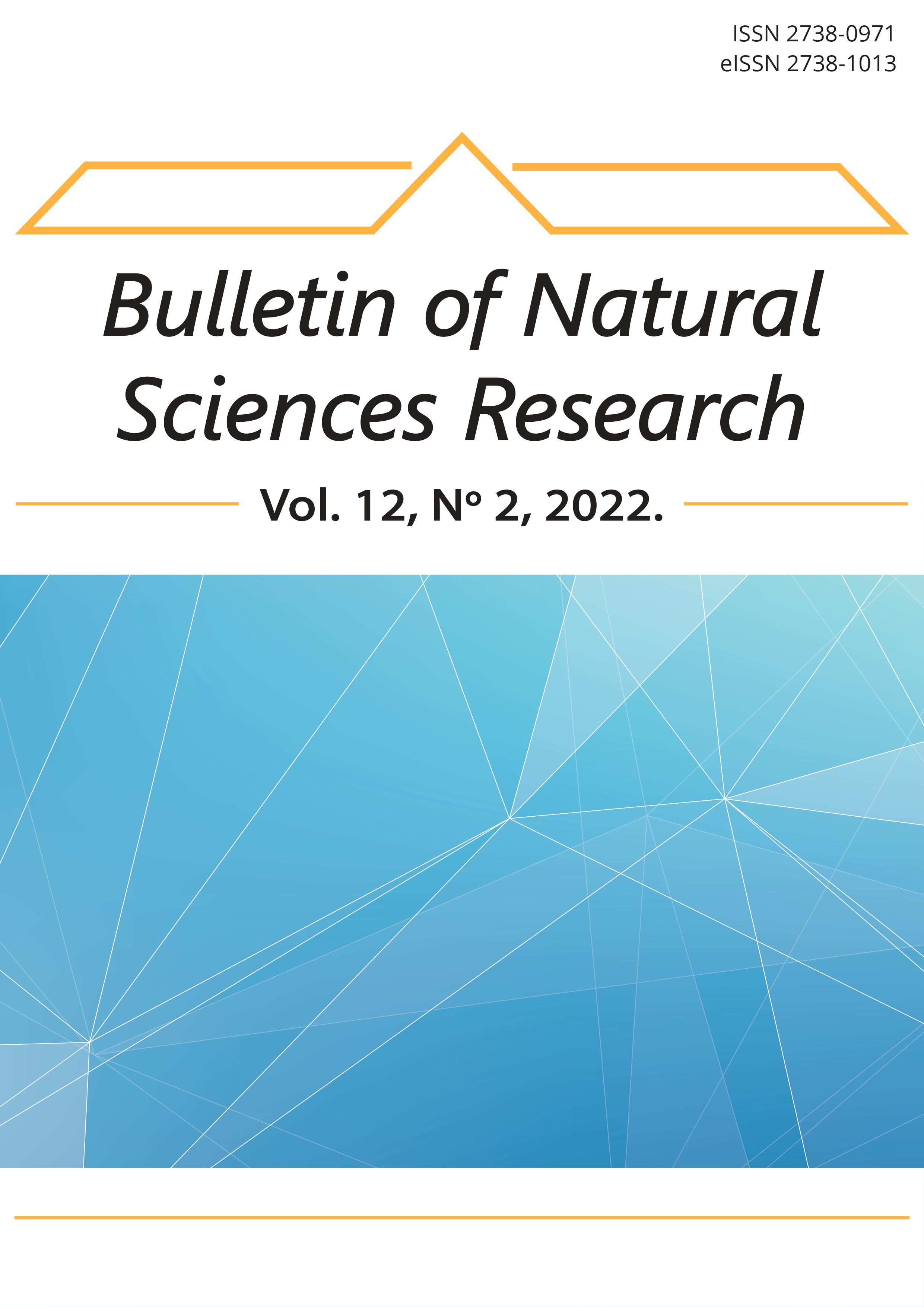QUALITY EVALUATION OF WINES FROM KOSOVO AND METOHIJA: POLYPHENOLS CONTENT, ANTIOXIDANT ACTIVITY AND ELEMENTAL COMPOSITION
Abstract
Wine is a very rich source of polyphenols and essential elements which have multiple biological activities. This study evaluates the total phenolic content (TPC), antioxidant activity (AA) of sixteen wine samples made from different grape varieties in the territory of Kosovo and Metohija, mostly from the area of Orahovac and Velika Hoča. The obtained results, determined by using the Folin-Ciocalteu assay, showed that wines from territory of Kosovo and Metohija are rich in polyphenols, with TPC ranges from 276±16 to 371±46 (white wines) and 1467±32 to 2823±43 mg gallic acid equivalents GAE/L (red wines). The total antioxidant activities, determined by ABTS method, range from 8.7±0.4 to 22.8±0.7 mmol trolox equivalents TE/L for red wines and from 1.3±0.1 to 3.8±0.3 mmol TE/L for white wines. Elemental content of studied wines showed certain difference between wines from nearby regions.
References
Atanacković, M., Petrović, A., Jović, S., Bukarica, L. G., Bursać, M. & Cvejić, J. 2012. Influence of winemaking techniques on the resveratrol content, total phenolic content and antioxidant potential of red wines. Food Chem. 131, pp. 513-518. doi.org/10.1016/j.foodchem.2011.09.015
Babincev Lj. M., Gurešić D. M. & Simonović R. M. 2016. Spectrophotometric characterization of red wine color from the vineyard region of Metohia, Journal of Agricultural Sciences Belgrade 61(3), pp. 281-290. https://doi.org/10.2298/JAS1603281B>
Cavuldak, O. A., Anli, R. E. & Vural, N. 2013. Phenolic Composition and Antioxidant Capacity of Some Red Wines from Turkey. International Journal of Food Science and Nutrition Engineering 3(3), pp. 40-47. DOI:10.5923/j.food.20130303.04
Đurđić, S., Pantelić, M., Trifković, J., Vukojević, V., Natić, M., Tešić, Ž. & Mutić, J. 2017. Elemental composition as a tool for the assessment of type, seasonal variability, and geographical origin of wine and its contribution to daily elemental intake. RSC Advance, 7, pp. 2151-2162. http://doi.org/10.1039/C6RA25105F
Geana, I., Iordache, A., Ionete, R., Marinescu, A., Ranca, A. & Culea, M. 2013. Geographical origin identification of Romanian wines by ICP-MS elemental analysis. Food Chemistry, 138, pp. 1125-1134. DOI:10.1016/j.foodchem.2012.11.104
Greenough, J. D., Mallory-Greenough, L. M. & Fryer, B. J. 2005. Geology and Wine 9: Regional Trace Element Fingerprinting of Canadian Wines. Geoscience Canada, 32(3), pp. 129-137. https://journals.lib.unb.ca/index.php/GC/article/view/2712
Iglesias, M., Besalu E. & Anticó, E. 2007. Internal Standardization−Atomic Spectrometry and Geographical Pattern Recognition Techniques for the Multielement Analysis and Classification of Catalonian Red Wines. J. Agric. Food Chem., 55, pp. 219-225. https://doi.org/10.1021/jf0629585
Ivanišević, D. & Jakšić, D. 2012. Viticulture in Serbia according to statistics and viticulture zoning, Final Conference, Application Census of Agriculture 2012 in the situation of agriculture and in the planning of agricultural policy in the Republic of Serbia. http://media.popispoljoprivrede.stat.rs/2014/Dokumenta/Radovi/Viticulture%20in%20Serbia%20according%20to%20statistics%20and%20viticulture%20zoning.pdf
Ivanova, V., & Stefova, M. 2010. Chinnici, F. Determination of the polyphenol contents in Macedonian grapes and wines by standardized spectrophotometric methods. J. Serb. Chem. Soc., 75(1), pp. 45-59. https://doi.org/10.2298/JSC1001045I>
Ivanova-Petropulos, V., Wiltsche, H., Stafilov, T., Stefova, M., Motter, H., & Lankmayr, E. 2013. Multielement analysis of Macedonian wines by inductively coupled plasma–mass spectrometry (ICP-MS) and inductively coupled plasma–optical emission spectrometry (ICP-OES) for their classification. Macedonian Journal of Chemistry and Chemical Engineering, 32(2), pp. 265-281. DOI:10.20450/mjcce.2013.447
Katalinić, V., Milos, M., Modun, D., Musić, I. & Boban, M. 2004. Antioxidant effectiveness of selected wines in comparison with (+)-catechin. Food Chem., 86, pp. 593-600. https://doi.org/10.1016/j.foodchem.2003.10.007
Menković, N., Živković, J., Šavikin, K., Gođevac, D., Zdunić, G., 2014. Phenolic composition and free radical scavenging activity of wine produced from the Serbian autochthonous grape variety Prokupac – A model approach. J. Serb. Chem. Soc. 79(1), pp. 11-24. https://doi.org/10.2298/JSC130511089M>
Pisoschi, A. M. & Negulescu, G. P. 2011. Methods for Total Antioxidant Activity Determination. A Review, Biochem & Anal Biochem, 1, pp. 1-10. DOI: 10.4172/2161-1009.1000106
Pohl, P. 2007. What do metals tell us about wine? Trends in Analytical Chemistry, 26(9), pp. 941-949. https://doi.org/10.1016/j.trac.2007.07.005
Rastija, V. & Medić-Šarić, M., 2009. Chromatographic Methods for the Analysis of Polyphenols in Wines. Journal of Chemists and Chemical Engineers, 58(03), pp. 121-128. https://hrcak.srce.hr/32964>
Ražić, S. & Onjia, A. 2010. Trace element analysis and pattern recognition techniques in classification of wine from central Balkan countries. American Journal of Enology and Viticulture (ASEV) 61(4), pp. 506-511. DOI: 10.5344/ajev.2010.10002
Rodrigues, S. M., Otero, M., Alves, A. A., Coimbra, J., Coimbra, M. A., Pereira, E. & Duarte A. C. 2011. Elemental analysis for categorization of wines and authentication of their certified brand of origin. J. Food Compos.Anal.24,pp. 548-562. DOI: 10.1016/j.jfca.2010.12.003
Šeruga, M., Novak, I. & Jakobek, L. 2011. Determination of polyphenols content and antioxidant activity of some red wines by differential pulse voltammetry, HPLC and spectrophotometric methods . Food Chem. 124, pp. 1208-1216. https://doi.org/10.1016/j.foodchem.2010.07.047
Sánchez-Moreno, C., Lаrrauri, J. A. & Saura-Calixto, F. 1999. Free radical scavenging capacity of selected red, rose and white wines. J. Sci. Food Agric., 79, pp. 1301-1304. https://doi.org/10.1002/(SICI)1097-0010(19990715)79:10<1301::AID-JSFA367>3.0.CO;2-Y
Stafilov, T. & Karadjova I. 2006. Methods for determination and speciation of trace elements in wine (review). International Journal of Pure and Applied Chemistry (IRJPAC),1,2, pp. 273-305. http://hdl.handle.net/20.500.12188/13830
Stratil P, Kuban V. & Fojtova J. 2008. Comparison of the phenolic content and total antioxidant activity in wines as determineted by spectrophotometric methods. Czech J. FoodSci.26, pp. 242-253. https://www.agriculturejournals.cz/publicFiles/01961.pdf
Thiel G. & Danzer Fresenius K. 1997. Direct analysis of mineral components in wine by inductively coupled plasma optical emission spectrometry (ICP-OES). J. Anal. Chem. 357, pp. 553-557. https://doi.org/10.1007/s002160050212
Vinković Vrček I., Bojić M., Žuntar I., Mendaš G. & Medić-Šarić M. 2011. Phenol content, antioxidant activity and metal composition of Croatian wines deriving from organically and conventionally grown grapes. Food Chem. 124, pp. 354-361. https://doi.org/10.1016/j.foodchem.2010.05.118
Waterhouse A., Folin-Ciociocalteu micro method; Department of Viticulture and Enology; University of California, Davis. https://waterhouse.ucdavis.edu/folin-ciocalteau-micro-method-total-phenol-wine
Authors retain copyright and grant the journal right of first publication with the work simultaneously licensed under a Creative Commons Attribution License that allows others to share the work with an acknowledgement of the work's authorship and initial publication in this journal.

